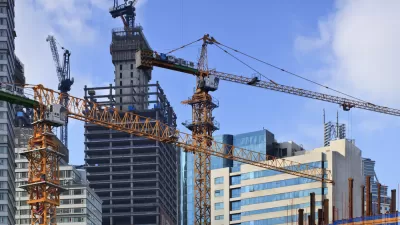Triple Canopy interviews architectural historian Kazys Varnelis about the importance of city data, the difficulty of building new infrastructure and how best to react to a stiflingly complex society.
"Triple Canopy: You've argued that it's no longer possible to rebuild existing infrastructures or, for that matter, to build better ones. And you've proposed 'social engineering' and 'human hacking' as keys to changing how we think of and how we use infrastructure. On the other hand, a quarter of the counties in Michigan are converting paved roads to gravel to save money. Do you still believe in the prospect of technology enabling us to salvage our increasingly chaotic, dilapidated built environment?
Kazys Varnelis: I've been thinking about this a lot lately. On the one hand, I still believe that a government initiative to bring infrastructure into the twenty-first century by opening data to everyone-not just leaving it in the hands of the technocratic elite-would make things better for everyone. We can see this in the ability to monitor traffic conditions in real time on Google Maps. If there is a jam in a certain area, our navigation system should route us around it.
But as I've been studying such possibilities over the past year, it's become clear to me that there's a danger to putting too much faith in the bottom-up model. During the past decade, there's been a lot of fascination with bottom-up forms of organization. If these work at certain levels, they don't work at others. In particular, they are unable to provide adequate structures of authority. This has been the typical lesson of revolutions: In the process of creating new governments, the revolutionaries fail or resort to authoritarianism."
FULL STORY: The Wrong Way Forward

Study: Maui’s Plan to Convert Vacation Rentals to Long-Term Housing Could Cause Nearly $1 Billion Economic Loss
The plan would reduce visitor accommodation by 25,% resulting in 1,900 jobs lost.

North Texas Transit Leaders Tout Benefits of TOD for Growing Region
At a summit focused on transit-oriented development, policymakers discussed how North Texas’ expanded light rail system can serve as a tool for economic growth.

Why Should We Subsidize Public Transportation?
Many public transit agencies face financial stress due to rising costs, declining fare revenue, and declining subsidies. Transit advocates must provide a strong business case for increasing public transit funding.

How to Make US Trains Faster
Changes to boarding platforms and a switch to electric trains could improve U.S. passenger rail service without the added cost of high-speed rail.

Columbia’s Revitalized ‘Loop’ Is a Hub for Local Entrepreneurs
A focus on small businesses is helping a commercial corridor in Columbia, Missouri thrive.

Invasive Insect Threatens Minnesota’s Ash Forests
The Emerald Ash Borer is a rapidly spreading invasive pest threatening Minnesota’s ash trees, and homeowners are encouraged to plant diverse replacement species, avoid moving ash firewood, and monitor for signs of infestation.
Urban Design for Planners 1: Software Tools
This six-course series explores essential urban design concepts using open source software and equips planners with the tools they need to participate fully in the urban design process.
Planning for Universal Design
Learn the tools for implementing Universal Design in planning regulations.
Ascent Environmental
Borough of Carlisle
Institute for Housing and Urban Development Studies (IHS)
City of Grandview
Harvard GSD Executive Education
Toledo-Lucas County Plan Commissions
Salt Lake City
NYU Wagner Graduate School of Public Service





























